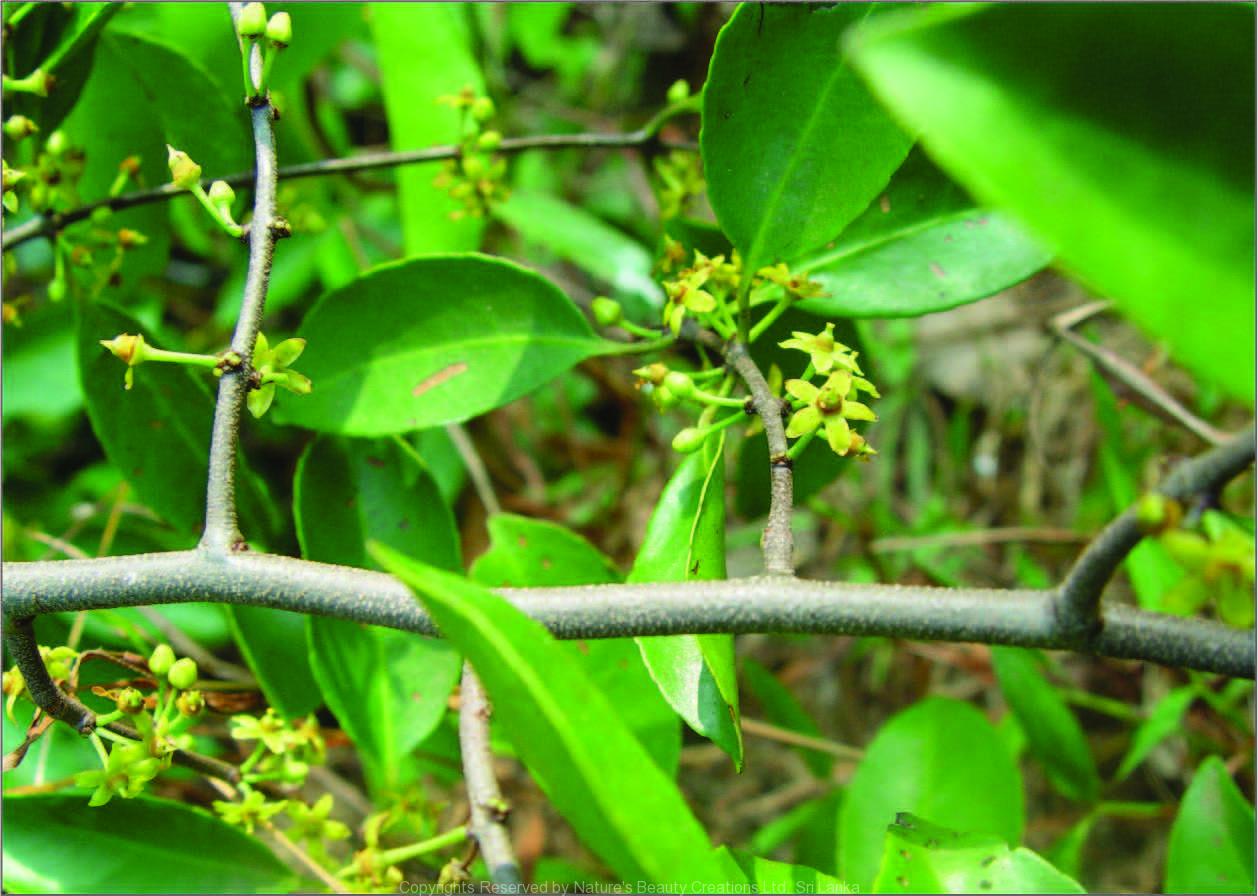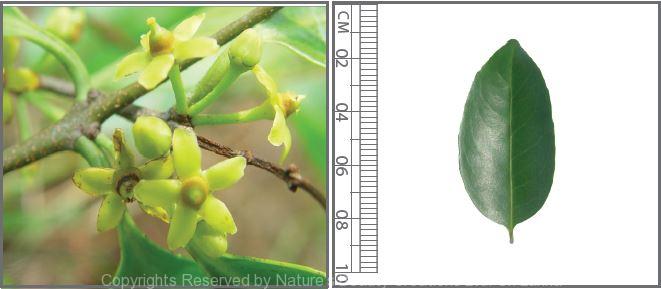

Traditional Knowledge
Useful plant parts :
Root and wood
Uses in traditional medicine :
- Decoction of the wood is taken to control diabetes
- Decoction of the root is taken for amenorrhea, dysmenorrhea and considered as an abortive
Scientific Research
Chemical constituents:
Friedelane and norfriedelane triterpenes: salasones D and E, salaquinone B and eudesmane type sesquiterpene: salasol B from stem; salacinol, kotalanol and kotalagenin 16-acetate from root; dammarane type, lupane type, and oleanane type triterpenes: foliasalacins A1– A4, B1–B3, C and foliachinenosides E–I, foliasalaciosides J–K from leaves; xanthonoid: mangiferin from plant
Bioactivity :
Methanol extract of stems: antihyperglycaemic; norfriedelane-type triterpenes: radical scavenging activity; chloroform and alcoholic extract of roots: antihyperlipidaemic; methanol extract of leaves: nephroprotective; mangiferin: prevents oxidative stress and protects pancreatic β-cells in diabetes; salacinol and kotalanol: α-glucosidase inhibitor
Clinical:
Nephroprotective drug for diabetic chronic kidney disease patients
Note :
Ripe fruits are edible
References : Deokate, U. A. And Khadabadi, S. S., (2012), Phytopharmacological aspects of Salacia chinensis, Journal of pharmacognosy and phytothera- phy, 4(1), 1-5. Kishi, A. et al., (2003), Structures of New Friedelane- and Norfriedelane- Type Triterpenes and Polyacylated Eudesmane-Type Sesquiterpene from Salacia chinensis LINN. (S. prinoides DC., Hippocrateaceae) and Radical ScavengingActivities of Principal Constituents, Chemical & pharmaceuti- cal bulletin, 51(9), 1051-1055. Muraoka, O. et al., (2010), Quantitative determination of potent alpha-glucosidase inhibitors, salacinol and kotalanol, in Salacia species using liquid chromatography-mass spectrometry, J Pharm Biomed Anal, 52(5), 770-3. Nakamura, S. et al., (2011), Chemical structures and hepatoprotective effects of constituents from the leaves of Salacia chinensis, Chem Pharm Bull , 59(8), 1020-8. Sellamuthu, P. S. et al., (2013), Mangiferin from Salacia chinensis Prevents Oxidative Stress and Protects Pancreatic β-Cells in Streptozotocin-Induced Diabetic Rats, J Med Food, 16(8), 719-27. Sikarwar, M. S. And Patil, M. B., (2012), Antihyperlipidemic activity of Salacia chinensis root extracts in triton-induced and atherogenic diet-induced hyperlipidemic rats, Indian J Pharmacol, 44(1), 88-92. Singh, R. G. et al., (2010), Nephroprotective role of Salacia chinensis in diabetic CKD patients: a pilot study, Indian J Med Sci, 64(8), 378-84. Yoshikawa, M. et al., (2003), Biological activities of Salacia chinensis originating in thailand: The quality evaluation guided by α-glucosidase inhibitory activity, Yakugaku zasshi, 123(10), 871-880. Yoshikawa, M. et al., (2008), New tri terpene constituents, Foliasalacins A1-A4, B1-B3, and C, from the leaves of Salacia chinensis, Chem.pharm. Bull, 56(7), 915-920.
Copyrights Reserved By
Natures Beauty Creations



